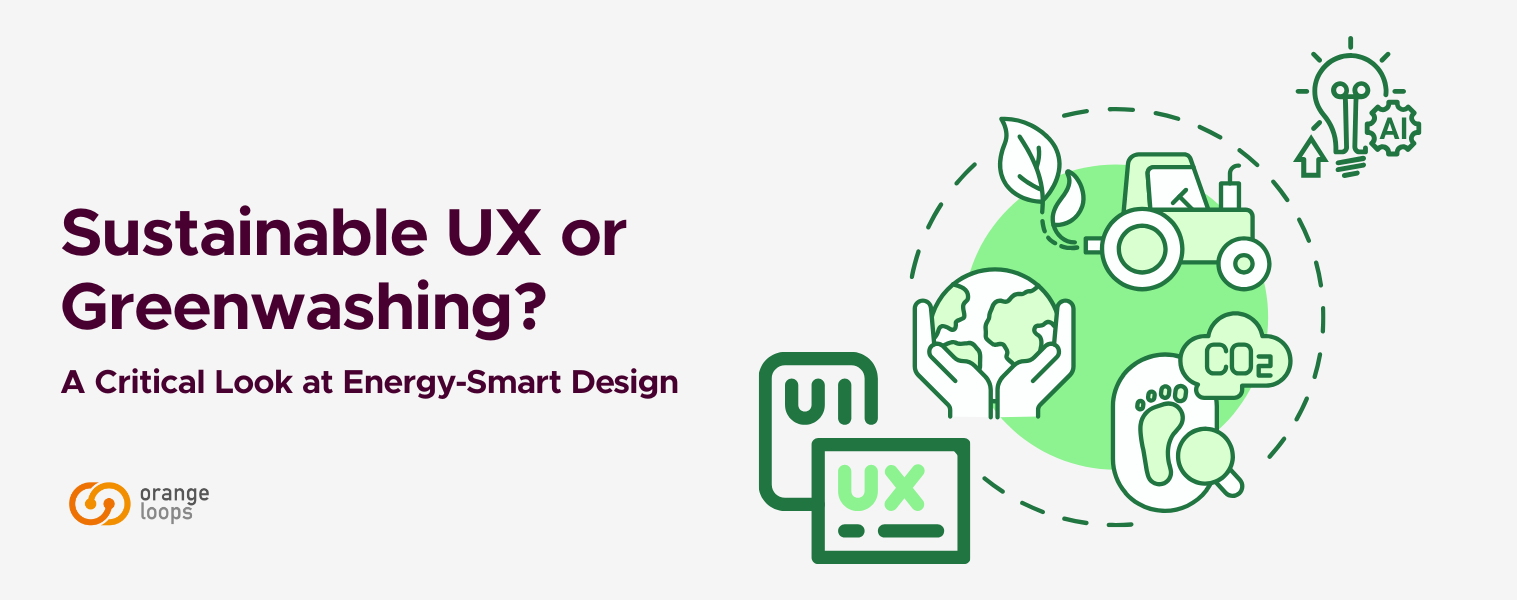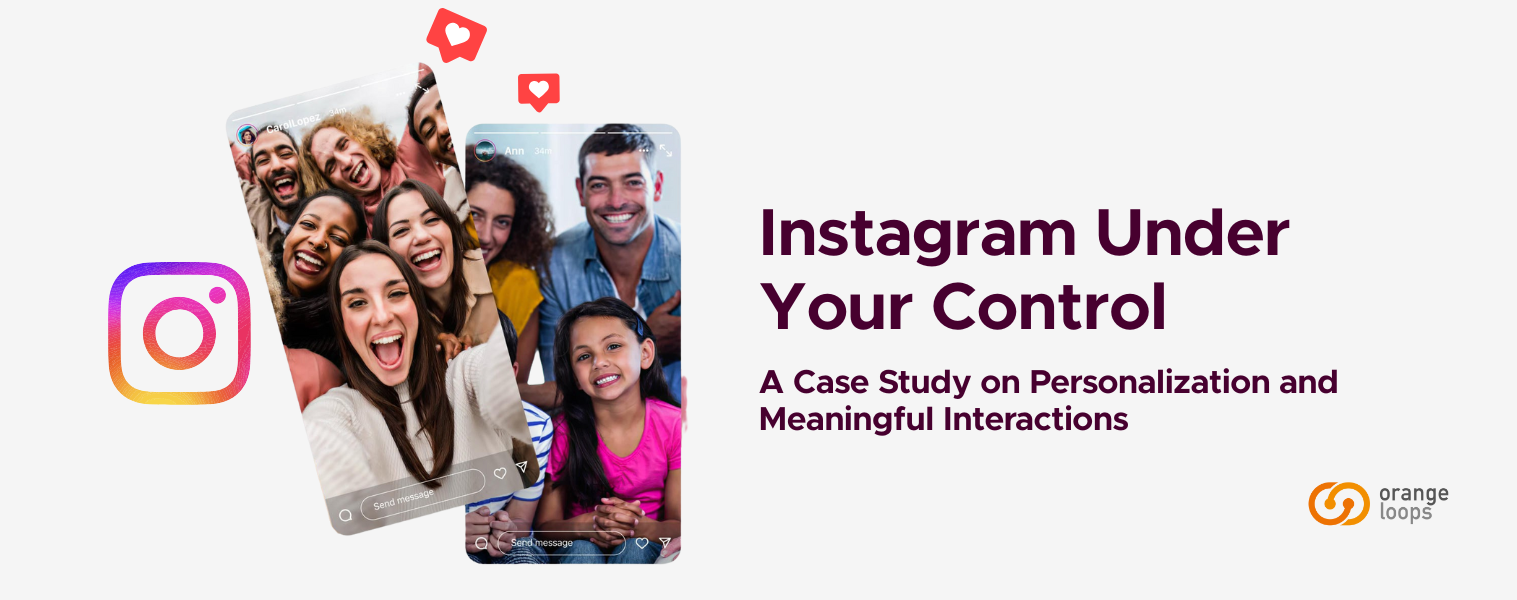
TL;DR
Our UX case study explored how non-creator Instagram users aged 25–34 experience the platform, with the goal of finding new ways to give them more control. Through surveys, interviews, and a competitive analysis, we identified four key areas for improvement: home screen setup, group management, ad settings, and content control. These insights aim to empower users and make their experience more relevant and meaningful.
Introduction
Instagram is one of the most popular social platforms today, but the experience is not always equally adaptable for everyone. As Stories, Reels, and Posts continue to grow, some formats gain more prominence than others, making it harder for certain users to engage the way they prefer. On the main screen, for example, Posts take up most of the space, while Stories remain less prioritized.
In our UX case study, we set out to understand user needs, identify areas for improvement, and present a solution aligned with their expectations. We followed a seven-step process to guide the design and definition of the ideas we present below.
Step 1 — Identifying the Problem
As the design team at OrangeLoops, we began by discussing how we perceived Instagram usage. We noticed that the platform is used more for viewing Stories than for engaging with Posts, yet the algorithm still gives more visibility to the latter. We also observed that users tend to prefer Stories, along with growing concerns about too many ads and limited options to adjust the experience.
From this initial hypothesis, our goal was to validate these perceptions by listening directly to users. Through planned surveys and interviews, we sought to see whether these issues appeared in real-life usage and, based on what we learned, design a proposal aligned with the current needs of the Instagram community.
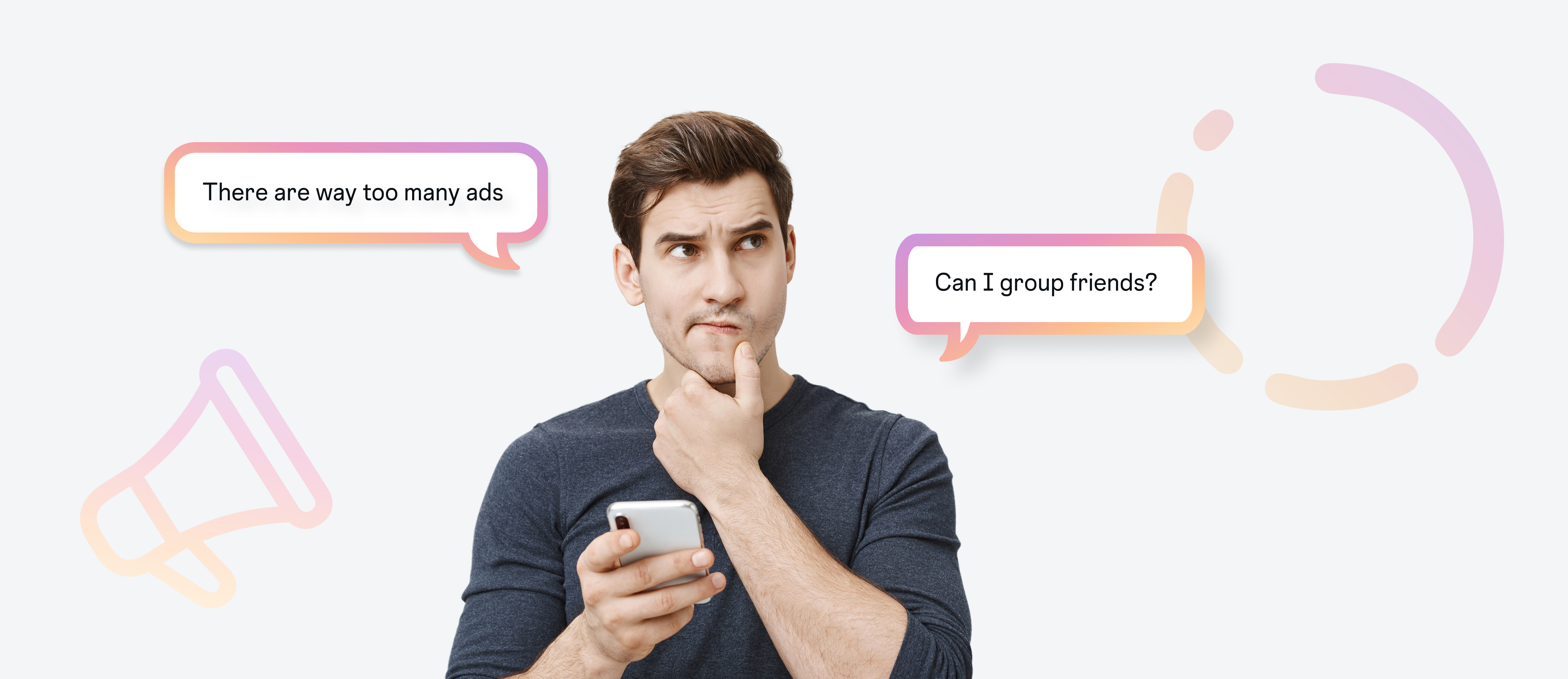
Step 2 — Listening to Users
We focused on a representative group of current Instagram users: individuals aged 25–34 who use the platform mainly for personal connections rather than for creating professional content. Our goal was to understand their experiences while staying connected with friends, family, and personal interests.
The findings confirmed our hypothesis: there is a clear gap between what users expect and what the platform offers today. Many want to prioritize certain formats, especially Stories, and have more options for selectively sharing content. Several mentioned the need to segment their audience to share specific posts with groups such as coworkers or a family group. While the “Close Friends” feature is a first step, most feel it lacks flexibility.
Users also pointed out that the frequency and relevance of ads interrupt their flow, making it less easy to discover content that truly matters to them. Together, these insights highlight the need for greater control.
To make these findings clearer, we included a chart summarizing the key survey results.
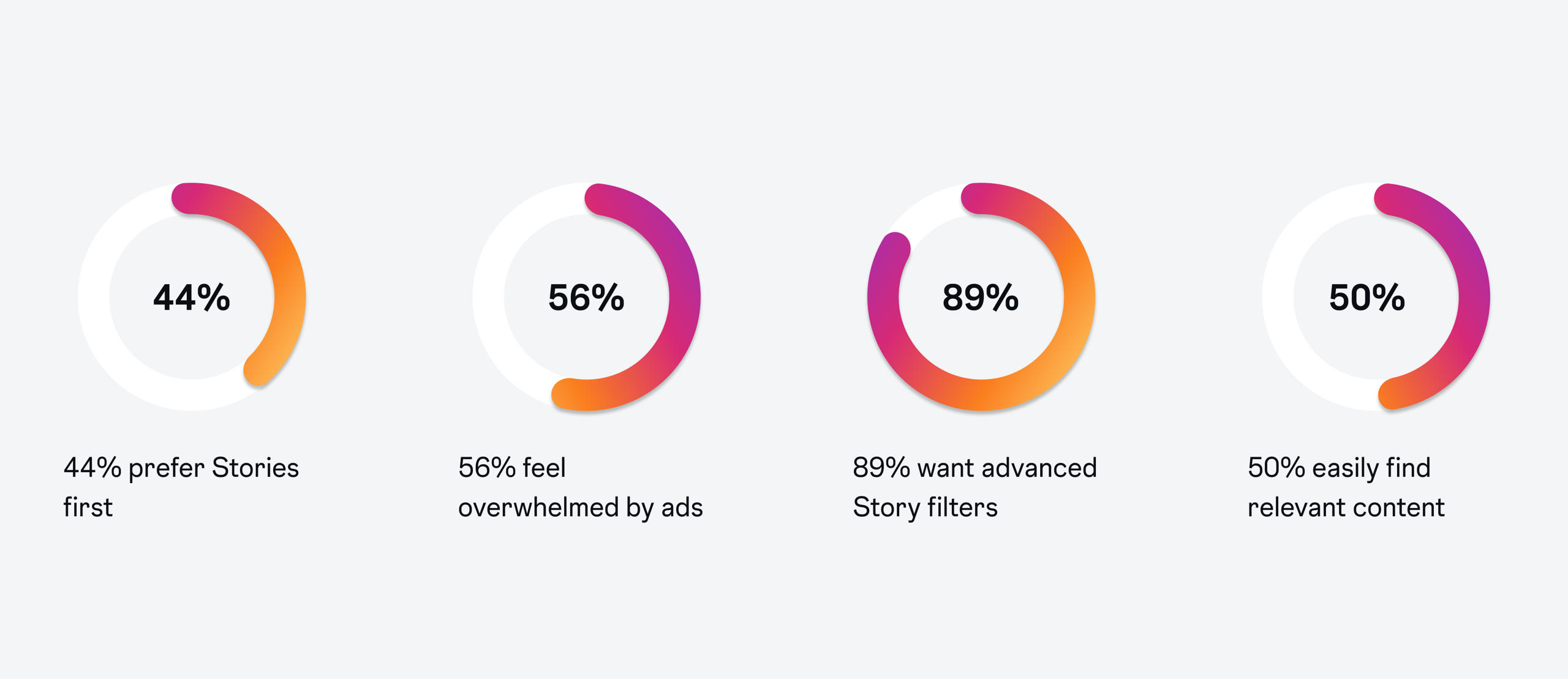
Step 3 — Learning from Other Platforms
Following our surveys and interviews, we identified what Instagram users expected and needed. We then conducted a comparative analysis to see how other popular platforms address similar challenges, aiming to find inspiration for improving the Instagram experience.
We focused on three key cases: TikTok, Snapchat, and WhatsApp.
TikTok
TikTok offers a dedicated settings section to adjust content preferences, such as:
-
Marking videos as “Not Interested” to reduce similar posts
-
Filtering videos by keywords in captions or hashtags
-
Selecting preferred languages for more relevant content
-
Activating “Restricted Mode” to limit sensitive content
-
Hiding specific creators
These tools give users clear control to shape their feed according to their interests and boundaries.
Snapchat
Snapchat provides flexible audience controls for each piece of content. Users can:
-
Choose the audience for each Snap or Story
-
Share via “My Story” (all friends), “Private Story” (selected friends), or custom lists
-
Adjust location visibility on Snap Map in real time
This flexibility allows for quick, context-based decisions about who sees their content.
WhatsApp offers an intuitive way to create and manage custom groups for both messaging and status updates. Users can:
-
Create and manage groups for different social circles
-
Define who can see status updates using options like “My Contacts,” “My Contacts Except…,” or “Share Only With…”
These features make selective sharing easier and encourage more relevant interactions.
From this analysis, a key principle emerged: platforms that offer simple, accessible tools for deciding what to see and with whom to share create experiences that feel more personal and meaningful.
Step 4 — Turning Insights into Opportunities
This combination of external and internal learnings helped us identify specific areas where Instagram could improve its experience.
We defined four key opportunities:
-
Main screen settings: Allow users to prioritize formats (Stories, Reels, Posts) so the most relevant content is always within easy reach.
-
Audience management: Create custom groups for selective content sharing, going beyond the “Close Friends” feature.
-
Content settings: Personalize the feed by selecting topics, content types, user categories, and recency preferences.
-
Ad settings: Control frequency, categories, privacy options, and ad personalization to reduce interruptions.
These areas respond directly to the needs expressed by users and take inspiration from effective practices on other platforms. Based on these findings, we moved into the design phase aiming to create solutions that better reflect what users told us.
Step 5 — Visualizing Solutions
Once the four key opportunity areas were defined, we developed medium-fidelity wireframes to explore how these ideas could integrate into Instagram’s existing experience. Our aim wasn’t to redesign the platform from scratch, but to offer practical, easy to use features that help people shape it to their habits and preferences.
These wireframes allowed us to visualize the most promising ideas early on and move toward more detailed design solutions, ensuring that each proposal felt intuitive and relevant to everyday use.
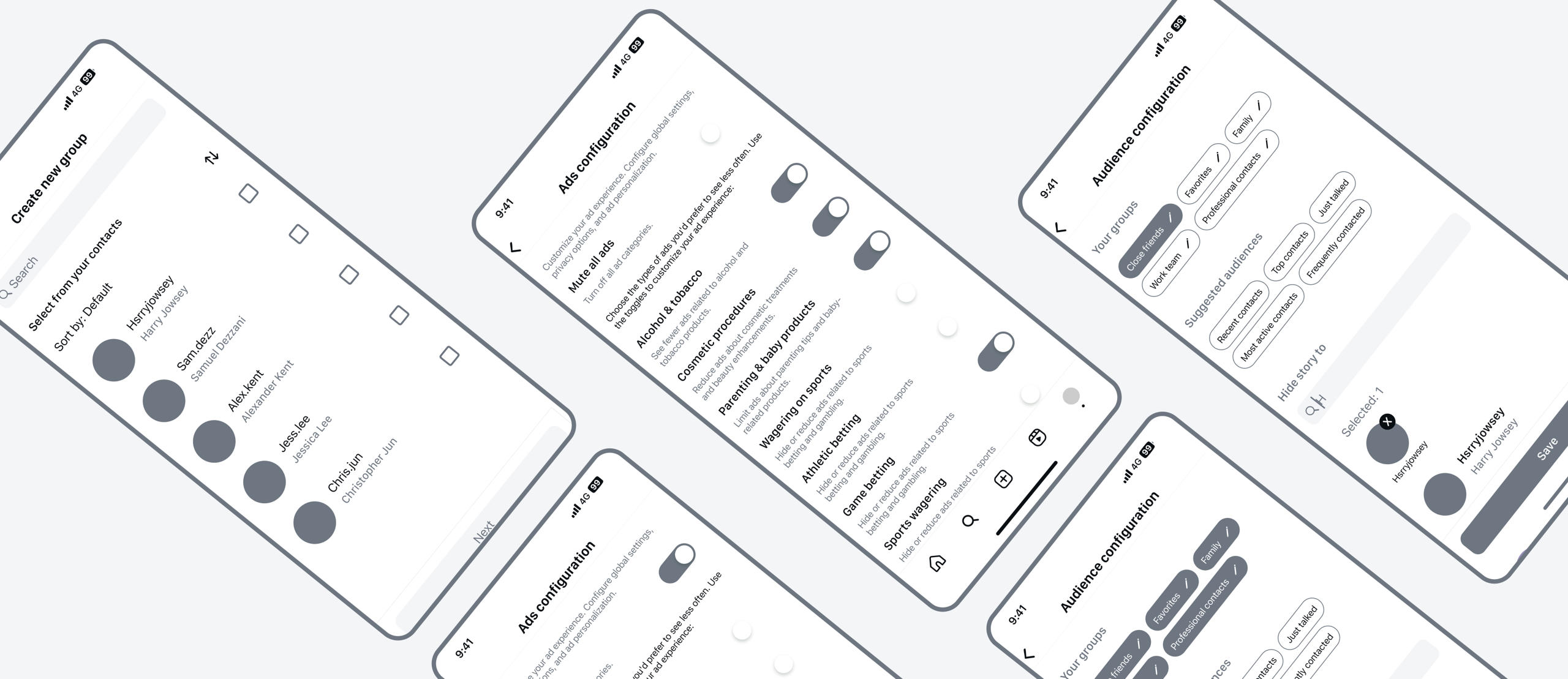
Step 6 — Final Design Solution
After a thorough process of research, ideation, and definition, we focused on designing a solution that gave users greater control over their Instagram experience. Our main goal was to allow each person to shape the platform so it naturally fit their daily habits and individual needs.
This solution came together in a central experience control hub, designed so that users could:
-
Prioritize the content formats they wanted to see first, such as Stories, Reels, or Posts
-
Configure and refine their ad experience, adjusting the frequency, categories, and relevance of ads
-
Filter content to focus on the topics, creators, or types of posts most relevant to them
-
Choose precisely who to share their content with, including the option to create custom groups
This hub aimed to reduce information overload and make both content and ads more meaningful, fitting naturally into each user’s interests and daily life.
Discover how the redesign puts users in control. Watch the final result in the video below!
Step 7 — Final Thoughts
Our case study shows that giving users greater control over categories, formats, and audience segmentation leads to an experience that feels more relevant and satisfying. The proposal doesn’t aim to reinvent the platform, but to enrich it with flexible tools that adapt to different ways of connecting and sharing.
By listening closely to users, learning from other platforms, and iterating on ideas with real feedback, we shaped solutions that feel practical, adaptable, and genuinely valuable.
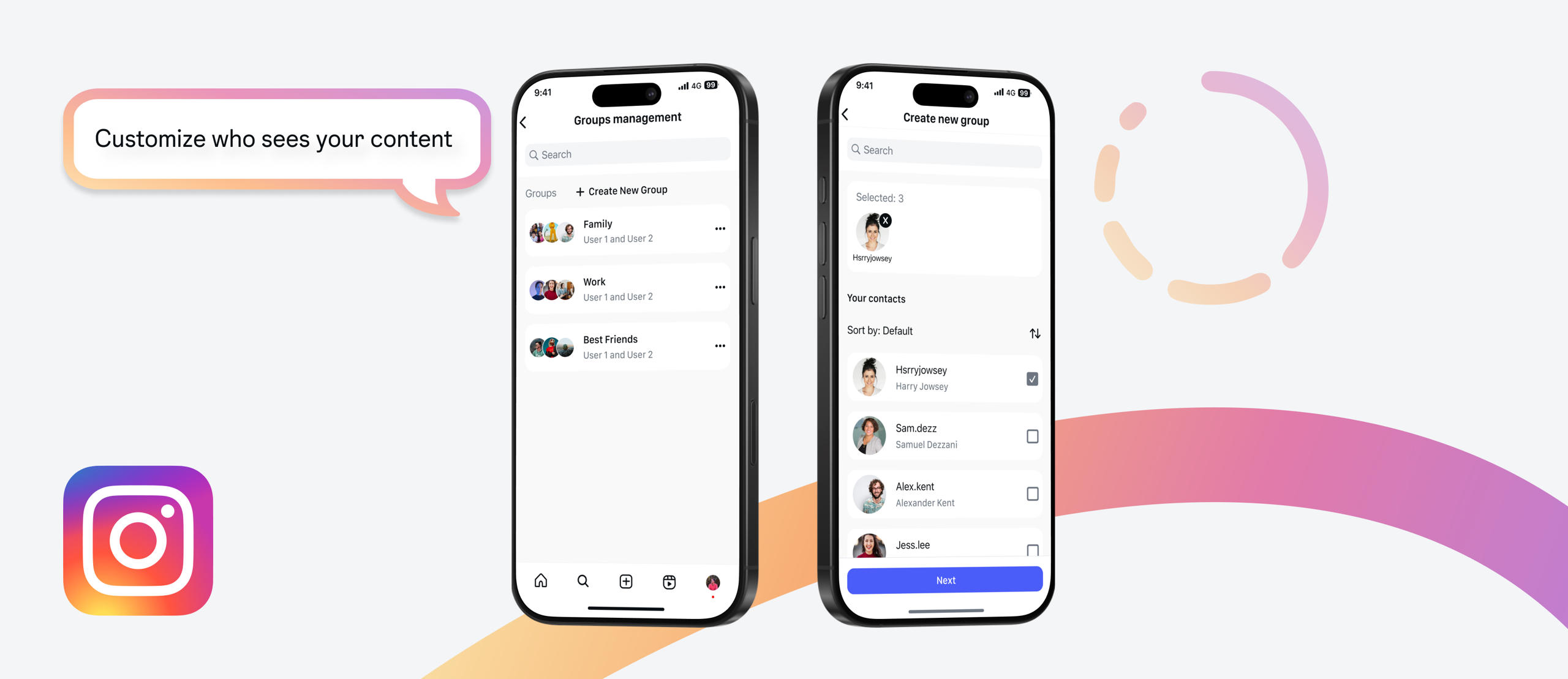
How We Can Help You
At OrangeLoops, we’re dedicated to crafting digital solutions that solve real problems and deliver intuitive, memorable user experiences. If you’d like to learn more about our approach and explore collaboration opportunities, we’d be happy to talk with you.
👉 Get in touch with our team to discover how we can take your product to the next level.

